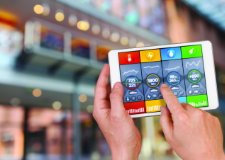The advance of e-commerce has marked a before and after in various global industries, but its impact on the food sector in Latin America has been particularly profound, in this region, where traditional consumption patterns have prevailed for decades, e-commerce has burst in as a disruptive force that not only facilitates the purchase of food, but radically transforms consumption habits. Factors such as:
- Access to a wider range of products.
- The convenience of shopping from any device.
- The rise of home delivery apps has revolutionized the way we plan and buy food.
Added to this transformation are global dynamics that have had a significant influence on Latin American consumer behavior. The COVID-19 pandemic accelerated digitalization, driving consumers and companies towards e-commerce, forcing a rethinking of business models and distribution strategies. Health and sustainability concerns have also altered consumer preferences, with consumers now seeking healthier, organic and locally sourced foods, which is creating new opportunities for companies that know how to adapt to these trends.
The change in food consumption habits is not limited to convenience or access; technology has enabled greater personalization, tailoring offerings to individual preferences and enhancing the user experience through advanced algorithms that predict behaviors; this level of precision is not only changing purchasing decisions, but is also redefining how companies manage food supply and demand.
However, the evolution of e-commerce presents a number of significant challenges for companies in the food sector, logistics infrastructure, especially in the complex urban context of many Latin American cities, competition with traditional channels and increasingly high consumer expectations demand continuous innovation and a more seamless integration between the digital and the physical.
E-commerce has experienced explosive growth in Latin America over the last decade. While internet adoption rates in the region were historically below levels seen in developed markets, the situation has changed rapidly; according to a Statista report, e-commerce sales in the region reached $85 billion in 2022, and are expected to exceed $160 billion by 2025. The food industry accounts for a significant portion of this growth, driven primarily by convenience and access to a wider variety of products.
In terms of platforms, companies such as Mercado Libre, Cornershop and Rappi have played a central role in the expansion of food e-commerce, enabling consumers to access fresh and processed foods from their homes, eliminating the need to visit physical stores. In addition, supermarkets and retailers have implemented their own online sales channels, optimizing their logistics operations to meet growing demand.
Key factors:
- Digital access: Increased internet connectivity has been an essential driver; in countries such as Brazil, Mexico and Argentina, more than 70% of the population has regular internet access, facilitating the use of e-commerce platforms.
- Improved logistics: Supply chain optimization has been fundamental. Improvements in last-mile logistics, the digitization of inventory management and the use of big data for demand forecasting have enabled companies to better serve their customers in the online channel.

























